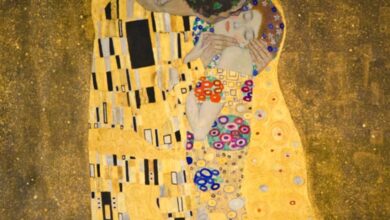
Weird Sports You Had No Idea Existed
Today you won’t find a man who doesn’t know what soccer, baseball or ice hockey is. These mainstream sports are played literally everywhere – backyards, school grounds, even in prisons. However, there are other less popular yet much more exciting and unusual sports that you should know about.
The sports we are going to tell you about are probably way too weird to make it to the Olympics, but they’ve found their dedicated followers and even hold competitions worldwide, from local to the international levels. In this article we tried to sum up the most extreme and bizarre ones, so prepare yourself to be amazed. Here is our top 12 Unusual Sports.
1. Chess boxing
Let’s start with the oddest one – Chessboxing. Yes, that’s Chess + Boxing! These two are merged together for a reason. Boxing, just like a chess game, is strategic attempt to outsmart the opponent. It’s the ultimate challenge that requires both brains and muscles. In this hybrid sport, players alternate between the chess game and boxing after each round, trying to either knock each other out or checkmate. The game lasts up to 11 rounds and the winner is determined by winning the chess game, or by knocking out the opponent, or by the judges’ decision at the end.
This sport is mostly played in Germany and England. It gained its popularity thanks to the 1992 comic “Froid Équateur“ written by French comic book artist Enki Bilal.

2. Wife Carrying

Wife Carrying comes from Finland and it’s pretty self-explanatory- it’s a sport event in which male competitors race across a special obstacle track in the fastest time while carrying their female teammate on their backs. There are three types of carrying: piggyback, fireman’s carry (over the shoulder), or Estonian-style (the one you can see in the picture). The last one is obviously the most popular. The proud winner of the Wife Carrying World Championships held in Sonkajärvi, Finland takes home a wife’s weight in beer.
3. Bog Snorkelling

Bog Snorkelling – is a swimming race along the peat bog with a snorkel and flippers. The conventional swimming equipment is not allowed, yet wet suits are advisable. The competition is held annually in Wales, UK.
4. Underwater Upside-Down Ice Hockey

This is a new craze among Australian free divers and extreme sports lovers, watched by the spectators on monitors. The rules of underwater upside-down ice hockey are quite similar to the classic game. What makes it even more extreme is that the game is played under ice without oxygen in a rink 6 meters wide by 8 meters long. Each period lasts 10 minutes with a 10-minute break for divers to warm up. Players have to surface for air every 30 seconds at least.
5. Quidditch

Yep, we’ve all read and watched Harry Potter and we all know what the Quidditch is. For those who for some reason are not familiar with the franchise, Quidditch is a wizarding sport played between two teams of seven players riding flying broomsticks, using four balls. In the muggle world, the players mount the real broomsticks and attempt to hurl balls through round hoops at opposite ends of the field, much the same as in the book.
6. Bossaball

This team sport came to us from Spain. Bossaball is very similar to volleyball, but also includes elements of football, gymnastics and capoeira. The game is played on a huge inflatable court. Integrated trampolines on each side of the net allow players to bounce high enough to spike the ball which makes the game even more spectacular.
7. Unicycle Polo

Unicycle Polo, aka unicycle hockey, is played just like regular polo except the participants are mounted on a unicycle to play the ball. Imagine how hard it must be to balance on a unicycle while trying to hit the ball. Seriously, if you are bored or want to kill some time, check out some of the games on YouTube. It’s hilarious.
8. Extreme Ironing

It all started in England, when a guy named Phil Shaw, being particularly bored and tired, decided to bring ironing to a completely different level. The idea of this extreme sport is to take ironing boards to remote and unusual locations, iron clothes and photograph yourself doing it. There is even a special TV program called “Extreme Ironing: Pressing for Victory”.
9. Firematic Racing aka Ladder Racing

Fire fighters get bored too when they are not saving lives. So they came up with a game to keep them occupied. The rules are pretty simple: competitors race towards a tall wall, position the ladder and then climb it to the top. The winner is the one who gets there faster then other competitors. This crazy sport combines the speed of the sprinter, the vertical grace of a house painter, and the headgear choices of a rock climber.
10. Bubble Football/Soccer

The rules of the game are pretty much the same as in standard soccer. All you need is a ball and a bunch of friends. Using an inflatable zorb-like bubble, you can smash into other players and find yourself literally rolling away from the ball. If playing soccer isn’t as exciting anymore, you can always try this one weird variation.
11. Pumpkin Boat Racing

Basically any pumpkin lover can compete in this weird yet fun water race. All you need to do is to find a huge (400-700 pound) pumpkin and hollow it out. Decorating your pumpkin is very important too. So get creative! The rules are explained as “there are no rules and no fouls, other than that the pumpkin needs to float and needs to go really fast”. It should also be mentioned that there are three classes in the race: motor, experimental and paddling. The paddling class is the most popular in terms of entries.
12. Caber Toss

This particular sport is special because unlike those we talked about earlier it has a historical background. Caber toss is a traditional Scottish sport event in which competitors throw large wooden poles called cabers. However, the point of the game is not to toss the log very far, but rather to land the top of the log close to the person who is throwing it. No need to mention that all the competitors are wearing kilts.




